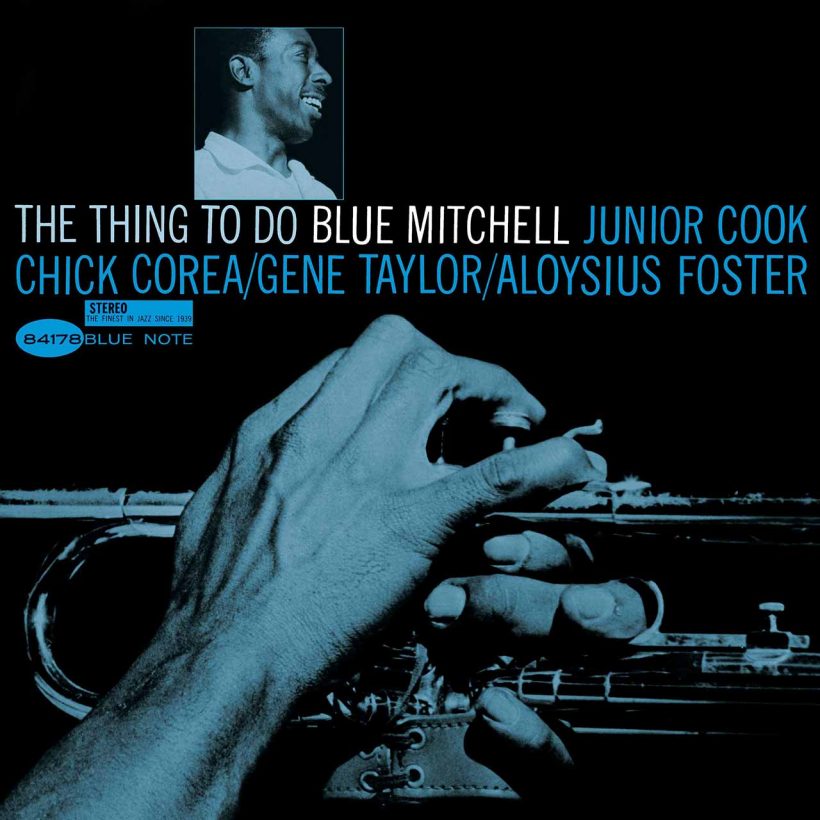‘The Thing To Do’: Blue Mitchell’s Classic Hard Bop Album
The Miami trumpeter’s Blue Note debut captured him hitting a creative peak.

Despite being a late starter in music, playing the trumpet came naturally to Blue Mitchell, who, within five years of learning to play the instrument, was recording professionally for Blue Note Records. Drawing inspiration from his musical heroes, bebop trumpet pioneers Fats Navarro and Clifford Brown, Mitchell quickly blossomed into an accomplished horn player whose distinctive sound blended melodic fluency with athletic agility and lyrical warmth. Although he appeared on Blue Note’s radar early on in his career, it wasn’t until 1958, when he began recording for the label as part of pianist Horace Silver’s trailblazing hard-bop quintet, that producer and Blue Note boss Alfred Lion fully appreciated the trumpeter’s talent. By the time Silver disbanded his successful group in 1964, Lion had already signed Mitchell, whose debut album for the company, The Thing To Do, was released in 1965. It was the first of eight albums during a fertile six-year alliance with the iconic jazz label.
Listen to Blue Mitchell’s The Thing To Do now.
When Blue Note signed Mitchell in the summer of 1963, the trumpeter already had an impressive resume. Born in Miami, Florida, in 1930, Richard Allen Mitchell was nicknamed “Blue” as a teenager by his brother. He started playing in his local high school band before venturing north to New York in 1952 where he served a three-year musical apprenticeship in R&B saxophonist Earl Bostic’s group. His instinctive playing and seamless meld of blues and bebop caught the ear of rising saxophone star Cannonball Adderley, who in 1958 hired him for a session for Riverside Records. Adderley’s enthusiasm for the trumpeter’s playing resulted in Mitchell joining him at the label. He recorded seven albums there before joining Blue Note.
The Thing To Do wasn’t Mitchell’s first Blue Note session as a leader. Shortly after arriving at the label in 1963, Lion recorded him fronting a sextet including pianist Herbie Hancock and tenor saxophonist Joe Henderson. The session was shelved for unknown reasons but eventually surfaced as Step Lightly in 1980.
Only bassist Gene Taylor, who had played alongside Mitchell in Horace Silver’s band, was retained from that session for The Thing To Do, recorded eleven months later in June 1964. Mitchell also brought in tenor saxophonist Junior Cook, whom he had formed a close association with playing behind Silver for six years, and a 23-year-old pianist then virtually unknown to the wider jazz world: Chick Corea, who had cut his teeth working with Latin jazz stars Mongo Santamaria and Montego Joe. On drums was a newcomer, Aloysius “Al” Foster, making his recording debut.
The Thing To Do opened with a Mitchell classic: The bright and cheery “Fungii Mama.” A self-penned number defined by carefree calypso rhythms, the track exuded a palpable Caribbean vibe and quickly became accepted as a jazz standard; among those who later covered it were organist Jimmy Smith and tenor saxophonist Jimmy Heath.
As a writer, Heath contributed two cuts to The Thing To Do: The beautifully pensive “Mona’s Mood,” highlighting Mitchell’s gleaming lyricism, and the livelier title track, a swinging hard bop number distinguished by strong solos.
Another standout was the mellow and bluesy, “Step Lightly, ” a Joe Henderson number that Mitchell previously recorded on his first Blue Note session. The album ended with “Chick’s Tune,” a showcase for Mitchell and Cook’s intricately entwined horn lines that allowed its composer, Chick Corea, to shine with a lengthy, explorative solo.
Mitchell stayed with Blue Note until 1969. By then, he had moved away from hard bop to explore everything from soul-jazz and funk to big band arrangements and even easy-listening music. Nonetheless, The Thing To Do – with its bright solo moments, cohesive ensemble work, and memorable tunes – captured the trumpeter at a creative peak.












